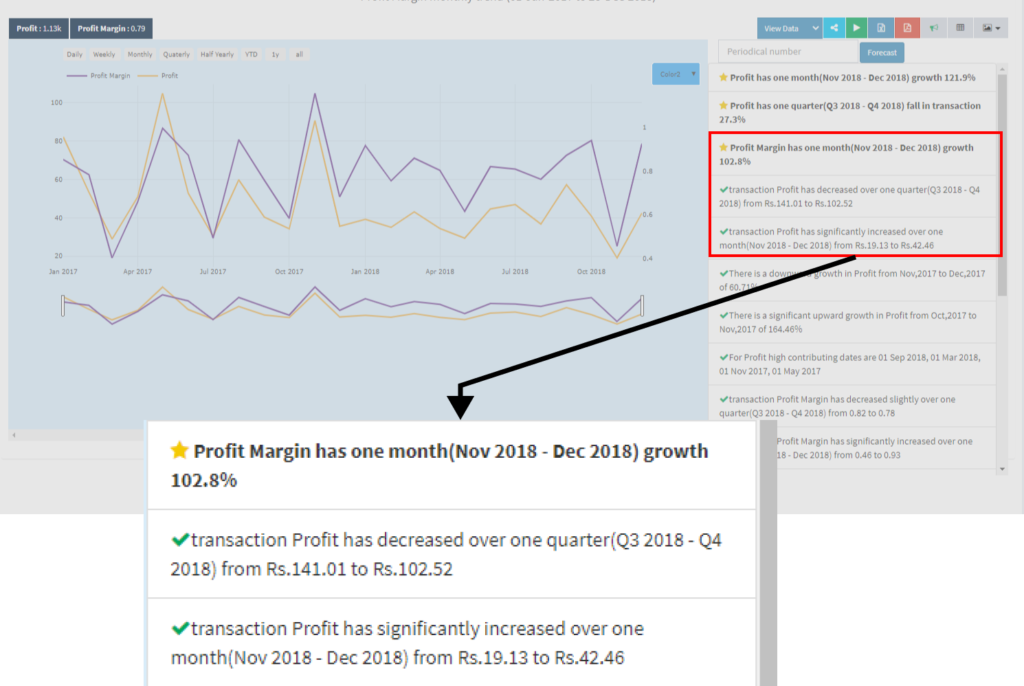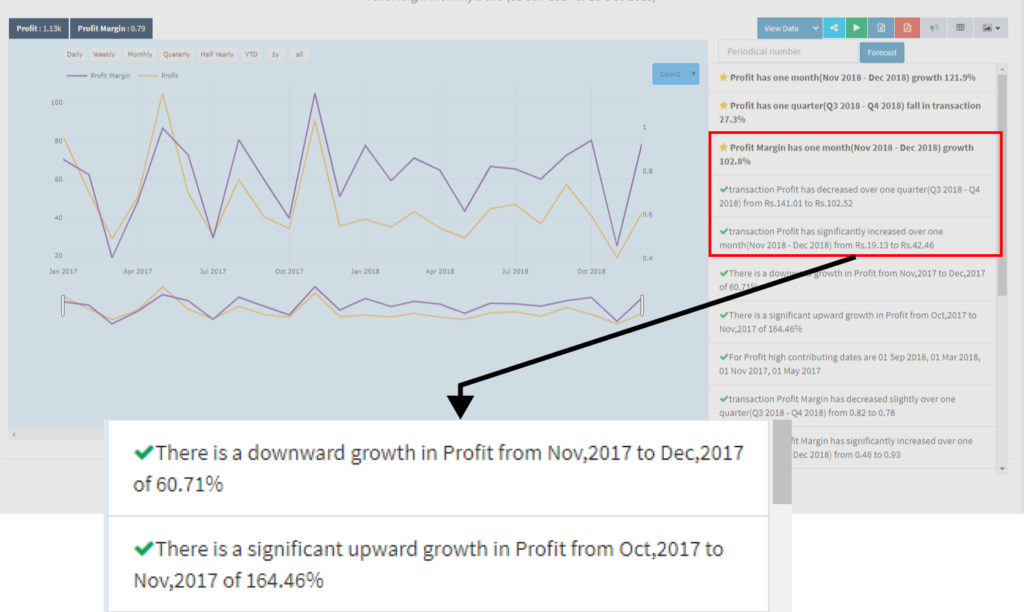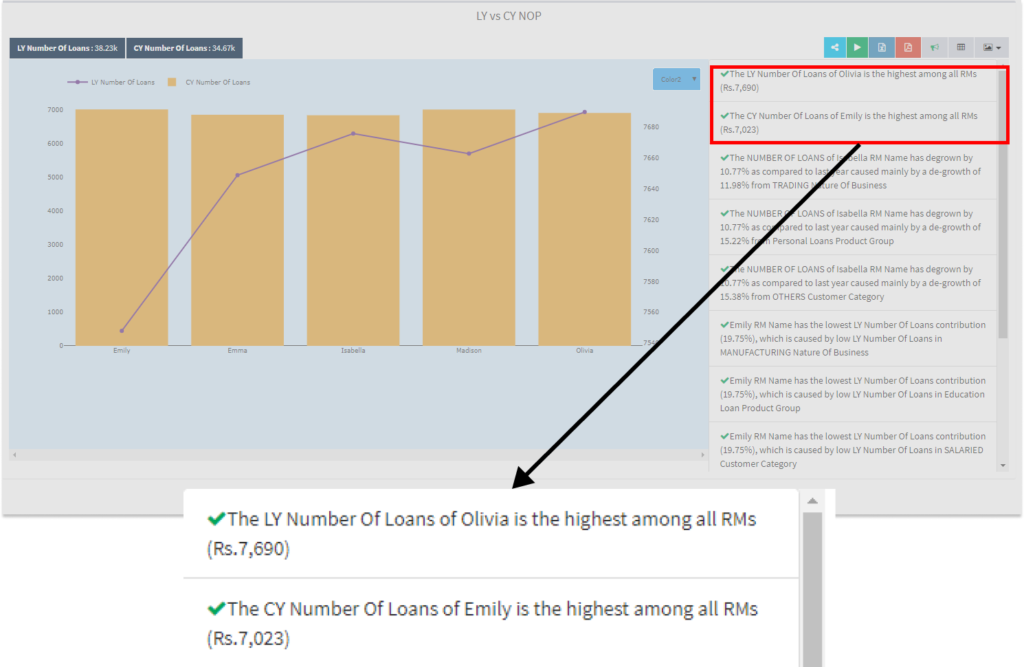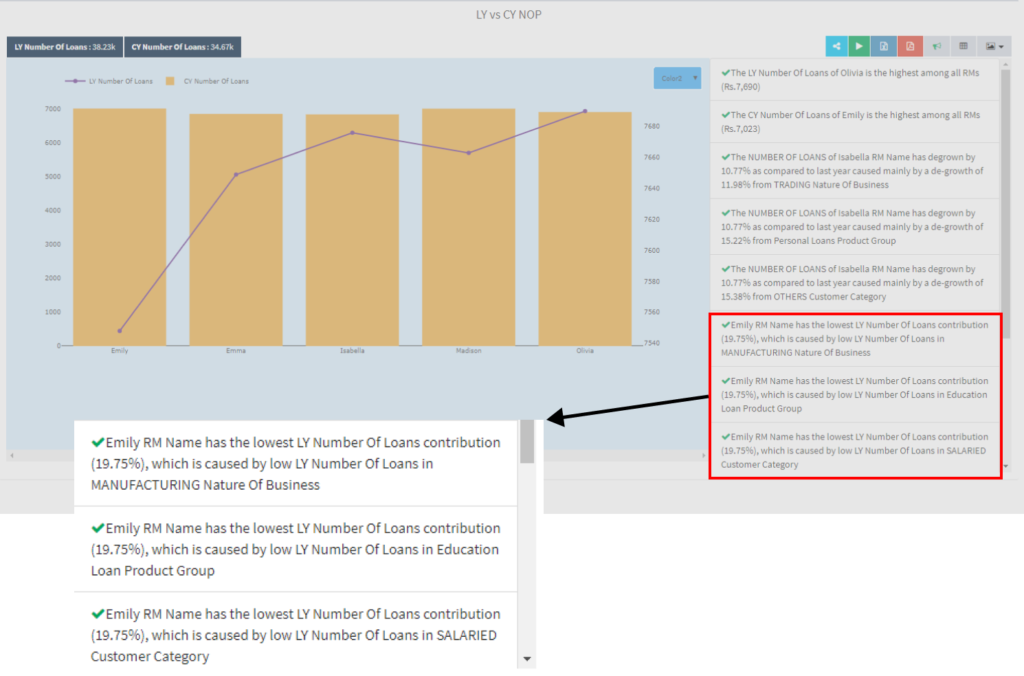Why Insights?
Insights derived through Natural Language programming are used to solve the problem by providing key statistical highlights of the data, extracting valuable insights which are key pointers for business to act upon, and prescribing actions to be taken, given the current state of data to improve the decision-making process. With the fast growth in data collection, auto-generated insights become important, which plays many roles like providing descriptive information, identifying trends/patterns, throwing where exactly the issue and give specific actionable. After all, data is only valuable if you can translate it into actionable insights. Your organization might be sitting on the world’s largest data pile, but it is useless unless you have the means to translate it into insights that drive your business.
Using Statistical analysis, Machine learning algorithms based on past data and business understanding one can create rules for finding low-performing areas, opportunities to improve, and specific actionable. Statistical analysis includes percentile analysis, anomaly detection, relationship/correlation analysis. Also using Rule-based engines and ML models on past data we can predict targets and opportunities for each level of sales hierarchy. Using some statistical transformation on the predicted target we will target in such a way that the target would be realistic.
The narrator provides insights into business across all sectors. It has the ability to share the performance metrics in the form of a graph or in tabular format within the organization leading to better-informed decision-making throughout the hierarchy from top to bottom. Natural language generation in our dashboards auto-generates insights on top of the tables and visualizations which enables any user to be more responsive in business and reduce their effort on doing the routine analysis, creating periodic reports from the raw data which they can spend on doing more important work.
There are four types of NLG Insights in Narrator:
- Descriptive Insights: It covers contribution-based insights like where is the most sales coming from or which region had the most transactions or who are the top performers.
- Trend Insights: Often the business wants to track the periodic performance of different metrics to compare the metrics which is where trend insights come to the rescue. We use different AI/ML models and various statistical in-built models to identify different patterns in growths for different frequency like daily, weekly, monthly, quarterly, or yearly based on the data and provide where there is a fall/increase in performance, where are the peaks and troughs so that business can understand the trend patterns.

- Growth Comparison: It helps the business to identify where is the growth/de-growth is happening and why. The insights tell the business when there was a big jump in performance and where is the jump coming from for which we use AI/ML models to find out the most impacting factor from all the underlying factors in the data.

- Attribution Based Insights: As the name suggest these insights helps business to figure out the reason why the performance is high/low or if the target was achieved or not and if not why? The Narrator identifies the most important factor responsible for low/high performance and also provides the next steps like how much the underlying factor should increase to reach the overall target.
Follow


